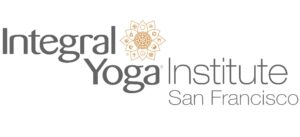by Vishnupriya Vanessa Doherty
When I first explored Yin Yoga, a new world of healing with energy opened up to me. I am referring to our energy channels, meridians (Chinese system) or nadis (Indian system), which are invisible pathways that house our vital energy. All of these transport energy (chi or prana), which flows through the organs, tissues, bones, joints and connect the exterior with the interior of our bodies. The topic of this blog is to explore what happens when, in particular, the lung and large intestine meridians go off balance and how Yin Yoga can assist in harmonizing the flow of this energy. Why did I choose these two meridians and omit the 10 others? According to Traditional Chinese Medicine (TCM), their qualities seem to be the most relevant to our current climate of COVID-19, allergy season, and how the shelter-in-place orders have altered our lives. With this in mind, I’ll review the lung meridian’s energetic qualities and the mental and emotional qualities of the lung and large intestine meridians to help us understand our potential responses to our current environment and a remedy.
The lungs are vital in filtering our breath, oxygenating our blood, fueling every cell with this oxygen, and expelling the carbon dioxide with the exhale. Energetically, the lungs are the first to take in external chi (upon the inhale) and mix it with our internal chi. According to TCM, if one gets frequent colds, the lung chi within the meridian is deficient (weak or lacks vibrancy). This can affect the whole body, in particular, the respiratory system. The symptoms present themselves via allergies, asthma, bronchitis, shortness of breath, coughing, hives and rashes. It also diminishes our sense of smell and taste. Because our lung chi is the foundation of our body’s network, when there is a breakdown in the network, respiratory illnesses, skin conditions and other conditions arise along with degeneration of the spine, spasm in the throat and esophagus, and rheumatic pain.
The energetic flow of the lung and large intestine meridians is key to balancing our emotional and mental qualities. This chi splits into two complementary polarities, Yin and Yang. The lung meridian (Yin) works in harmony with the large intestine meridian (Yang) and they share energetic characteristics in that they draw in nutrients and let go of waste. Emotionally, they are associated with our courage and reverence, meaning, Santosha (contentment) becomes more prevalent, and we experience our time in life as precious and accept what we cannot change. An imbalance in this chi can cause a sense of grief, isolation, loneliness and blocked emotions. Mentally, our thinking can be muddled, cloudy, or disconnected. When balanced, one has the drive and confidence to take on with grace the changes and difficulties found in life, lessening the desire to run away from what’s uncomfortable. Of course, all emotions are a natural part of life, but when they become never-ending or injurious to our health, look to the flow of chi as a remedy.
There are many ways to keep these channels free flowing, such as acupuncture, tai chi, qigong, and taking care of our diet, thoughts, environment and daily yoga practice. I would like to share a simple practice with you to be done 2 or 3 times per week. Some days it can be worked into your Hatha practice, beginning with sun salutations, backbends and inversion and ending with Yin Yoga, savasana, and Pranayama. Each Yin pose is to be held 3 to 5 minutes. This allows the body time to get deep into the connective tissue to gently load the tendons and ligaments, which is therapeutic for those with former injuries, illness, muscular tightness or blockage. When the pose is released, stagnant chi (distorted chi movement) and deficient chi starts to flow more freely. When these rivers of energy flow freely, optimal health is in sight.
Recommended poses:
- Butterfly pose (Baddha Konasana)
- Sphinx pose (Salamba Bhujangasana)
- Child pose with wide knees (Balasana)
- Dragonfly pose (Upavistha Konasana)
- Seated Forward Fold (Paschimottanasana)
Like in a traditional Hatha practice, the mental focus is very important. While in the pose, direct the breath to areas that are tight, blocked, or intense. Visualize the breath moving energy, releasing muscles and revitalizing your energy. Never move into pain – sharp, stabbing, burning sensation. This will hinder your motives and stall the energetic flow. Only move to your “edge” – feeling pressure with unlabored breath. Take time to rest in advasana (reverse corpse pose) or savasana after each pose to settle your body.
Yin Yoga is a beautifully meditative practice that can be tailored to your own personal ailments. Whether it’s illness, injury, lethargy and/or anxiety, depression, fear, sorrow, there is a sequence for you. Find an experienced teacher, an online class and explore the poses and meditations, then do your own exploring safely and mindfully at home. It’s just one more way to make the most of our time at home.
We hope you join us online for our Yin Yoga class Tuesdays at 7pm PST.
Vishnupriya Vanessa Doherty, RYT 500, YACEP, is a California native and has been practicing yoga since the early 90s. Vishnupriya lives the life of a yogi, not just for her own benefit, but so she can dive deep and teach the traditional methods of yoga and serve others wholeheartedly. She has been teaching since 2010 and continues to obtain certifications that focus on yoga for healing and realizing our innate peace. She holds certifications in Classical Hatha Level 1, Integral Yoga Intermediate and Advanced, Yin Yoga, Therapeutic yoga Level 1 and 2, Reiki Energy Healing Levels 1 and 2.


